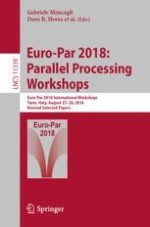2019 | Buch
Euro-Par 2018: Parallel Processing Workshops
Euro-Par 2018 International Workshops, Turin, Italy, August 27-28, 2018, Revised Selected Papers
herausgegeben von: Dr. Gabriele Mencagli, Dora B. Heras, Valeria Cardellini, Prof. Emiliano Casalicchio, Emmanuel Jeannot, Felix Wolf, Antonio Salis, Claudio Schifanella, Ravi Reddy Manumachu, Laura Ricci, Marco Beccuti, Laura Antonelli, José Daniel Garcia Sanchez, Stephen L. Scott
Verlag: Springer International Publishing
Buchreihe : Lecture Notes in Computer Science
